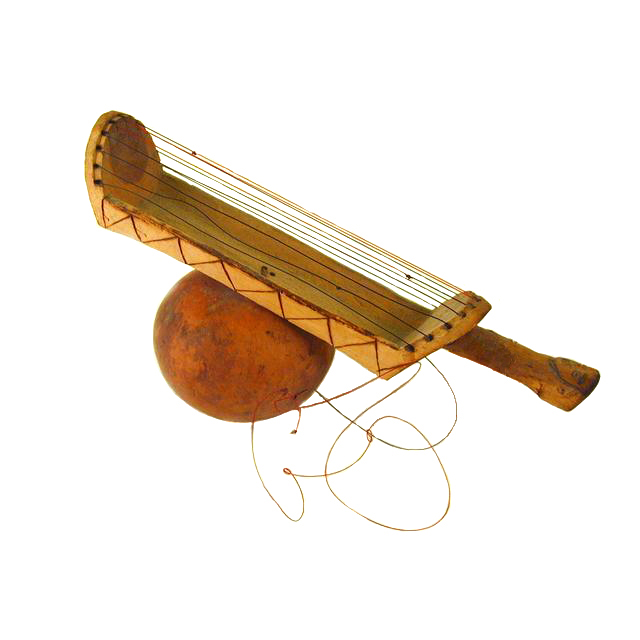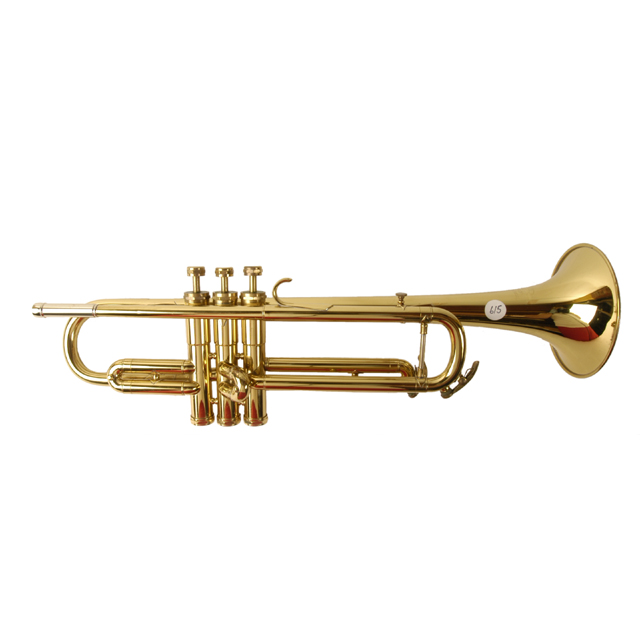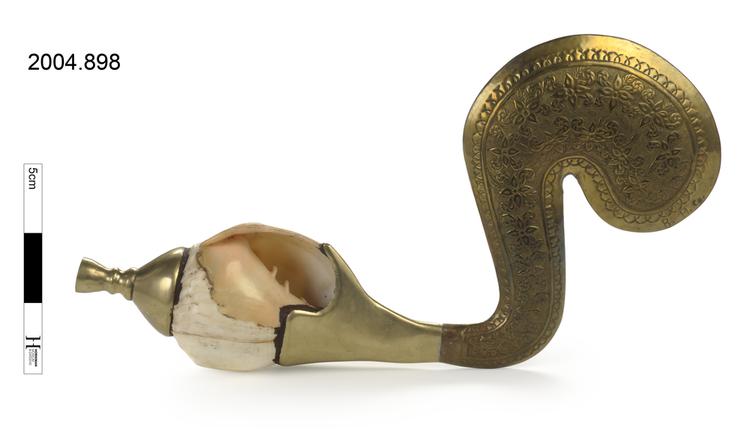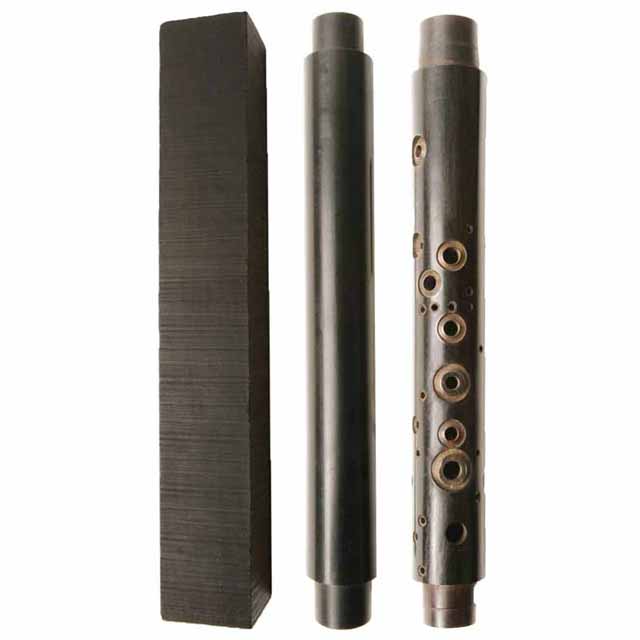Serpent. Anonymous. Bull Collection. Three flat brass keys mounted in saddles. Upper three finger-holes and two key-holes ivory bushed; lower three finger-holes and lowest key-hole brass-bushed. Upper bend replaced in copper; copper sheathing to part of lowest bend. Bull's catalogue in incorrect in referring to this as having two keys. Probably early 19th century. Lacks mouthpiece. One key-spring defective. Keys need re-padding. Leather covering in fair condition. Some worm holes; inspect for active work.
The serpent was first developed in the mid 18th century for accompanying church choirs and reinforcing the bass voices. The instrument has a mouthpiece similar to that of a trombone and a series of holes along the body. The pitch is changed through adjusting the lip tension and opening or closing the holes. The earliest serpents had six holes that were covered by the fingers. This led to tuning problems, as the optimal acoustical positioning of the holes made them impossible to reach. Keys were gradually added to allow the holes to be positioned independently of the player's fingers. At the start of the 19th century, two keys were added, one for each hand, with the six finger holes remaining open. The serpent's final design involved twelve keys and no open holes. This example has three keys and therefore represents an early stage in the instrument's evolution. It was made in the early 19th century and has been subjected to considerable repair, including the replacement of the upper branch with copper tubing.






